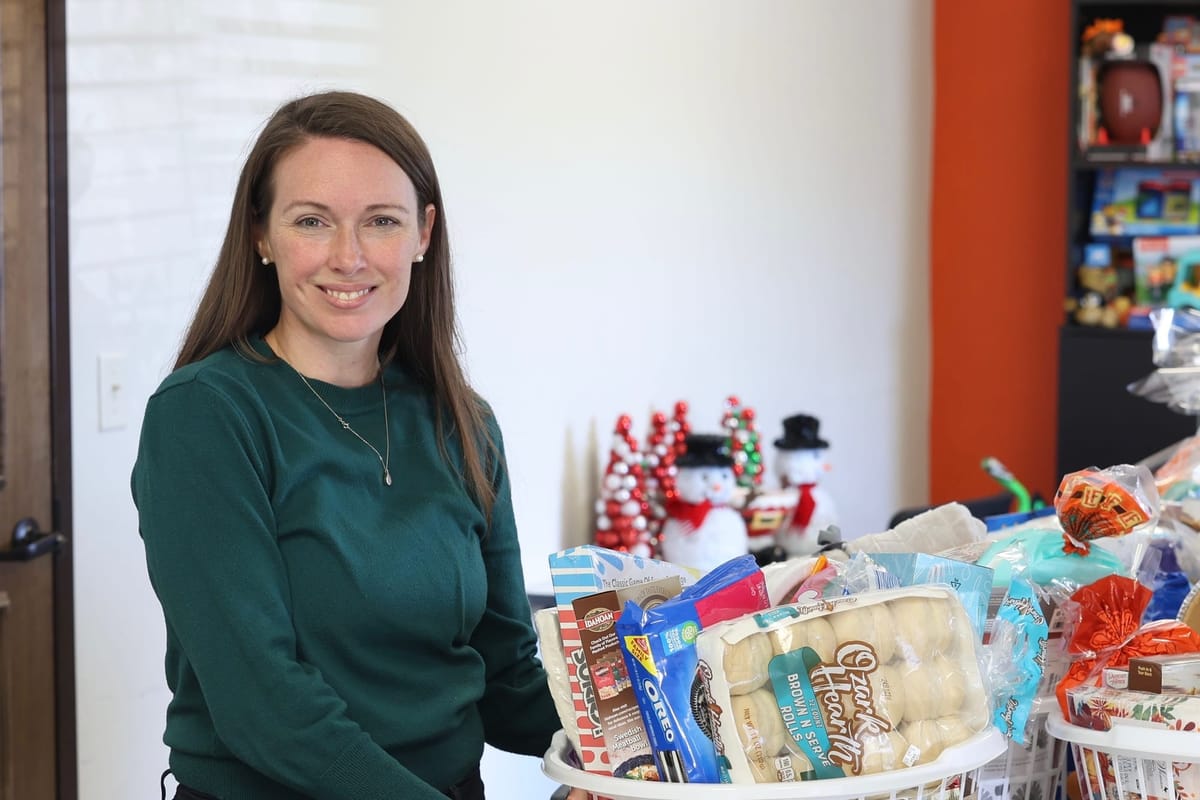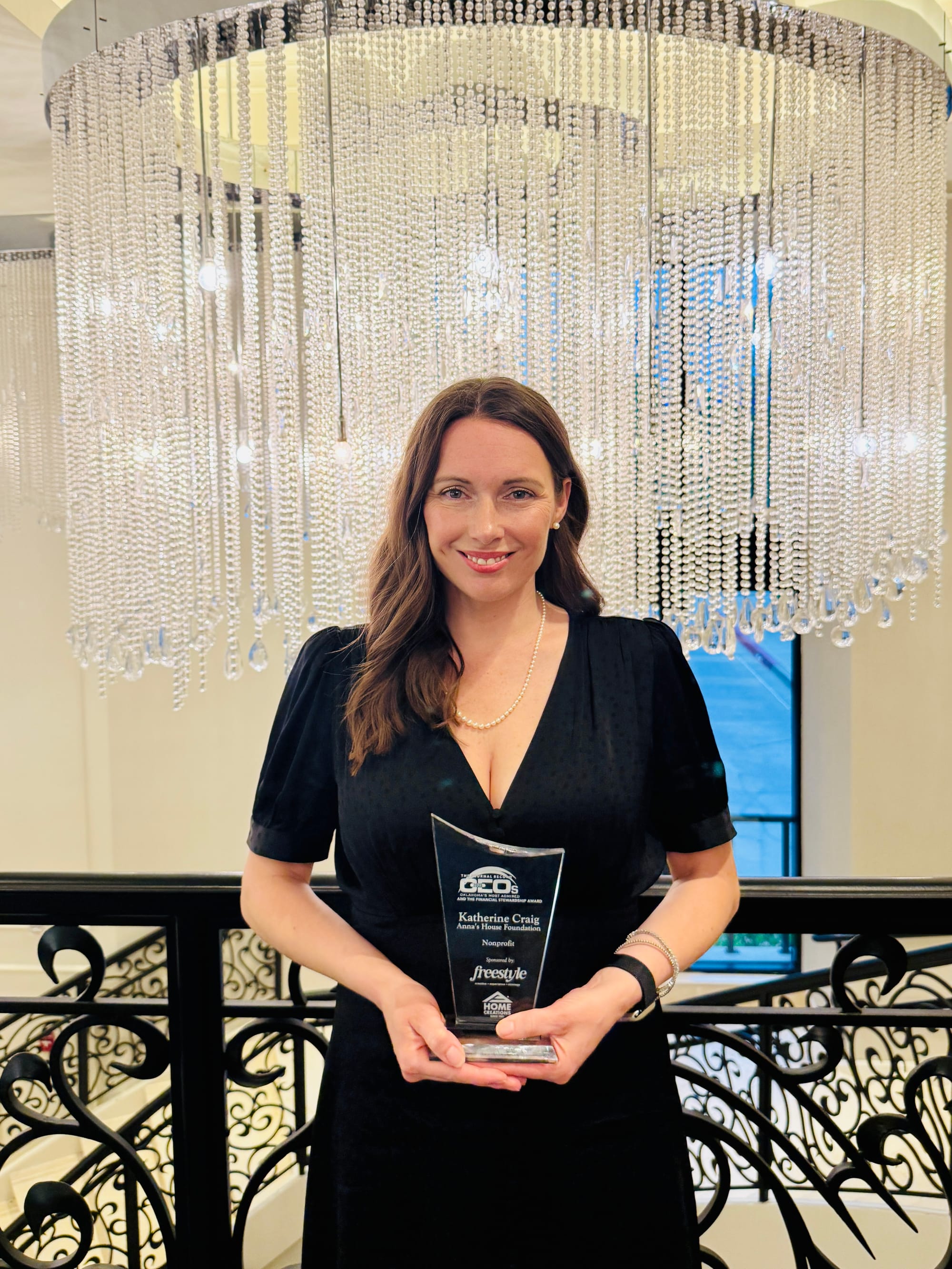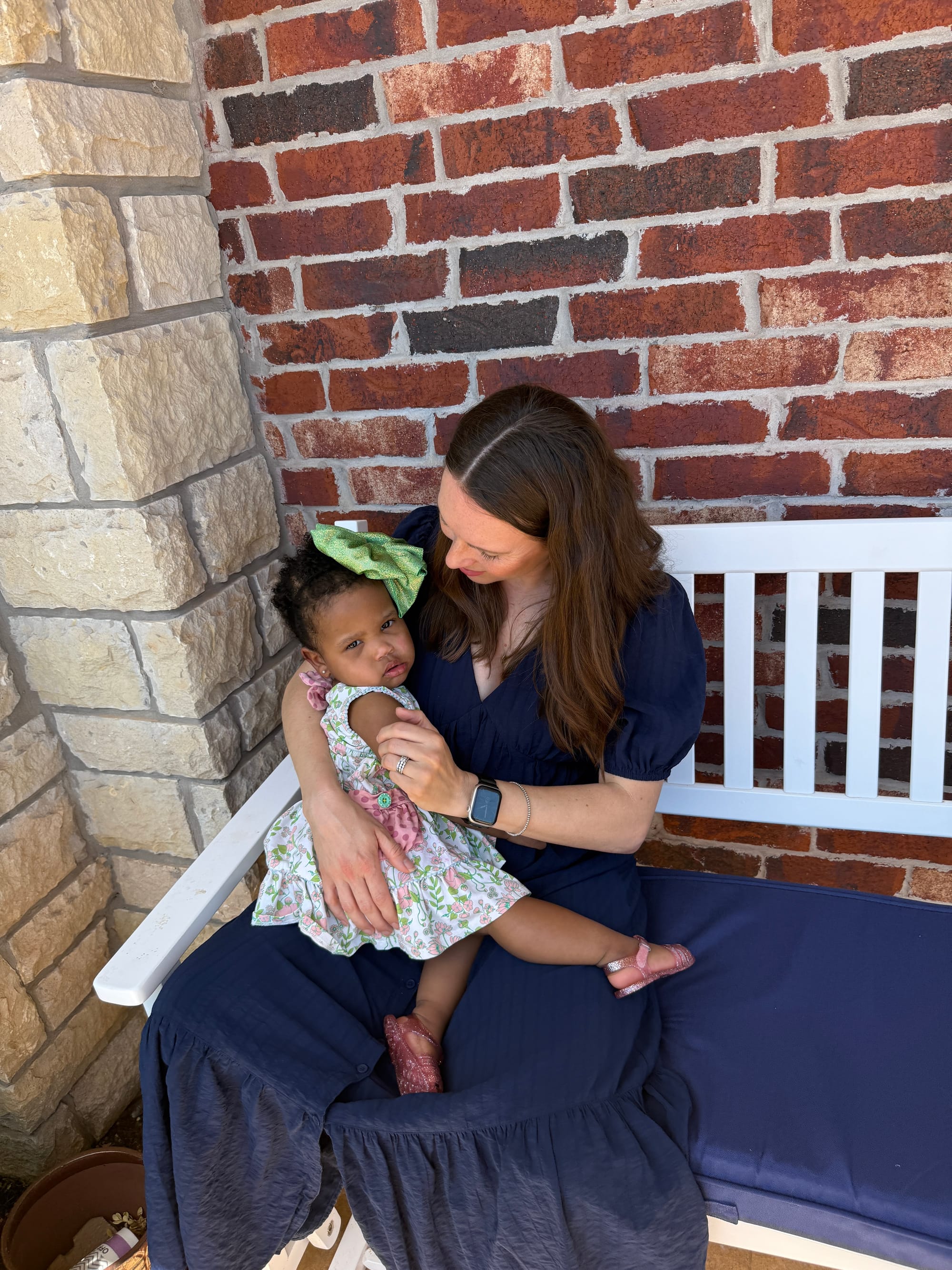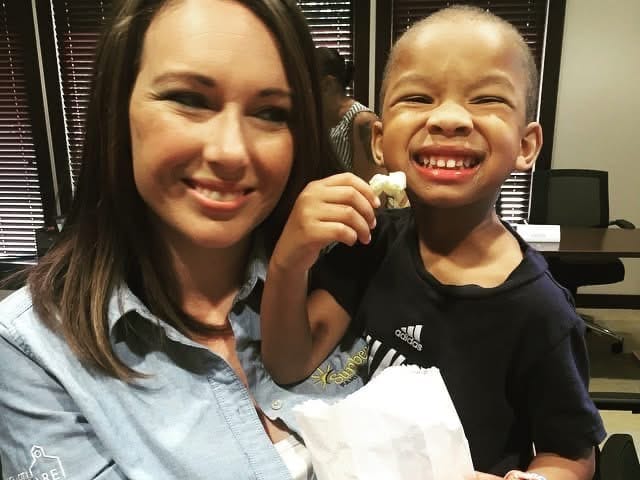
Katherine Craig was 5 years old when someone noticed she needed help. It was the woman next door—her best friend Katy’s mother—who saw a smart little girl adrift and lacking, and just took her in, showering her with kindness, stability and encouragement. That family loved her as their own, just like the Bible tells us to.
Katy’s family, all college educated, instilled in Craig a love of learning. “They really celebrated me when I did well academically, and at an early age, and I don’t know where it came from—but I just decided that people could take away just about anything from you, but they can’t take away your education,” she says.
It’s pretty hard not to cry when Craig talks about the difference that family made for her. “It was just everything that was good and kind. I had a birthday party every single year at their house. They would go on family vacations, and I got to go. And so the life I experienced was exponentially different than what it could have been had they been absent,” Craig says.
That acceptance, encouragement and kindness are what Craig has worked to replicate for foster children hundreds or thousands of times during her tenure as the executive director of Anna’s House Foundation (AHF), a faith-based nonprofit whose purpose is to provide immediate, stable and loving homes for Oklahoma’s children in state custody.
Under Craig’s eight years of smart, compassionate leadership, AHF has grown. A lot. When she started, there were seven staff members; today there are a dozen. The budget has gone from about $750,000 to $1.8 million. Services provided, once limited solely to foster care (matching children in need with foster families) now also include mental health services for foster families affiliated with Anna’s House Foundation, and are also available to any vulnerable families who need them.
“In 2012, the state of Oklahoma opened up the opportunity for agencies that were serving families—in many capacities—to be able to certify, recruit, train … and support [foster] families under the contract of that organization. So we have a contract with the state that allows us to do that,” Craig says.
This “opening up” action, part of a broader set of required improvements called The Pinnacle Plan, was the result of a lawsuit which required the State of Oklahoma to reform its Child Welfare Services to address issues and improve outcomes in the foster care system. Earlier this year, a federal court declared that Oklahoma Human Services (OHS, formerly OKDHS) has fulfilled its obligations under the Compromise and Settlement Agreement that brought forward the state’s Pinnacle Plan.
“Private agencies like ours had a huge responsibility in satisfying the terms of that lawsuit and the conditions [for the State of Oklahoma] to be successful,” Craig says. “We are still a contracted agency with the state. We get about 38 percent of our funding from that contract and then we fundraise the remaining balance for our full budget.”
She speaks in a crisp, polished cadence that is both warm and commanding. She is a top-notch fundraiser, brilliantly versed in data, donor segmentation and prospect research. Her nonprofit career began in high school, which means she’s been in the field for 26 of her 42 years. She holds a degree in marketing and business and is a first-generation college grad in her family. She’s also deeply faithful and often has the perfect Bible verse at the ready. Case in point: When asked what she would say to a someone who is intrigued by the idea of fostering but also afraid, “I would say the Lord doesn’t give us the spirit of fear,” she says, paraphrasing 2 Timothy 1:7, which reads “For God has not given us a spirit of fear, but of power and of love and of a sound mind.”


At the same time, she’s not going to sugarcoat the experience of fostering a child. “Difficulty is part of it. That’s almost a guarantee, but I think time and time again, what I’ve seen from families that have served in this space and done really difficult things is that they won. Their relationship with the Lord is closer and they’re forever changed in the most positive way, because they’ve seen Him work in ways that they never would have experienced had they not stepped into this space.” She often hears foster families say that they’d gone into the experience expecting to change the lives of children, “but then they tell you that this space ‘changed me and changed my faith,’” Craig says.
Anna’s House Foundation certifies and supports foster families who take children into their own homes. Large sibling groups can be among the most difficult to place all together; outcomes are far better if the children can be kept together, but finding fosters with five or six extra bedrooms is tough. One of the best things about AHF is its bold approach to solving problems. “There was a family in Luther that decided to donate 11 acres of land to us, at the same time [that] we were getting our foster care contract,” Craig says. For the team at AHF, this was the Lord’s perfect timing. “We started building high-capacity foster homes for families whose hearts were maybe larger than what their existing home could accommodate, so we could focus on keeping sibling groups together that otherwise would be separated.”
Those 11 acres have been transformed into the Anna’s House Community, a neighborhood of eight single-family homes plus a splash pad, two playgrounds, basketball courts, a pediatric office, an art therapy room and a genuine sense of community. Each home is spacious—3,200 square feet with five bedrooms, large kitchens and plenty of room to play and grow. Lots are large, too, more than an acre apiece so the families can plant gardens, raise chickens and enjoy a bucolic lifestyle. At this writing, all but one of the homes is filled.
She tells a sweet story about a foster child’s reaction to learning about the Community: “I remember one time we had a foster kiddo that was coming out there for an Easter party. He is a foster child in a home where they live in their own home in a regular neighborhood, and so the foster mom was explaining that they were going to the Anna’s House Community and she told him that ‘there’s all these families that look like ours, but they all live in this community together.’ And he said, ‘You mean there’s a whole community of kids just like me?’” In his neighborhood, he was the single foster child.
AHF’s counseling and mental health services, which have long been available to AHF foster families and children, are now also available to many more Oklahomans. “We serve any family that has a state funded insurance, so any vulnerable family that needs access to high quality mental health, we are a solution for that, and we do not have a wait list,” she says.
Just shy of two-thirds of AHF’s budget comes from private sources. Some of those sources are of the usual ilk: grants, fundraising campaigns and so forth. Another, AHF’s annual Gumdrops & Lollipops gala, might seem like just another charity event, but like everything AHF does, it’s been amped up and optimized. Hundreds attend the candy-themed soiree, slated for Sept. 20 this year.
Foster Care and General Child Well-Being in Oklahoma: By the Numbers
As of this writing, there are more than 5,800 children in Oklahoma’s foster care system. Depending on which source you look at, there are as many as 736 (Oklahoma Human Services) or as few as 450 (Oklahoma Senate) children who need foster families.
In May, there were 80 children who, in need of temporary emergency placement, spent the night in a DHS office or hotel because an adequate placement was not available.
The Oklahoma Pinnacle Plan, announced in July 2012, came out of a settlement agreement reached in a federal class-action lawsuit (D.G. v. Yarbrough) challenging the state’s treatment of children in foster care. The system was faulted for allowing abuse of children in its care, placing children in overcrowded and understaffed emergency shelters and failing to provide secure and long-term placements, among other concerns.
Oklahoma is currently ranked 46th in overall child well-being, according to the 2025 Kids Count Data Book compiled by the Annie E. Casey Foundation.

About Anna’s House Foundation
Anna’s House Foundation is a faith-based organization whose mission is to provide immediate, stable and loving homes for Oklahoma’s children in state custody, offering a future of hope and faith to foster children and foster families by providing housing, support, training and resources in a Christian community setting.
Children need foster care when a judge determines it is no longer safe for them to remain with their caregivers, often their parents, for reasons including domestic violence, drug abuse, neglect, physical and sexual abuse or inadequate housing. While the child’s parents or caregivers work a court-ordered plan, children are temporarily placed in a foster care home. The goal of foster care is for children to reunite with their parents, though in certain cases adoption may occur.
Anna, for whom Anna’s House was named, was born in 2007 in the Oklahoma County Jail, with cocaine and heroin in her system, 10 weeks premature and clinically dead. Her tiny heart began to beat again, and she was placed on a ventilator at Children’s Hospital for the next six weeks. After a failed kinship placement, Anna returned to the hospital with a diagnosis of double pneumonia and failure to thrive. Though she wasn’t expected to live, Anna did, spending 70 nights at Children’s Hospital without visits from anyone other than her DHS worker.
The doctors feared that if Anna did not bond with a parent very soon, she would likely die. The Harkins family learned of her situation and, after spending many nights with her in the hospital, brought her home as her foster parents, eventually adopting her on Jan. 28, 2009.
Anna’s adopted parents, Beth and Greg, started the Anna’s House Foundation in her honor. •

